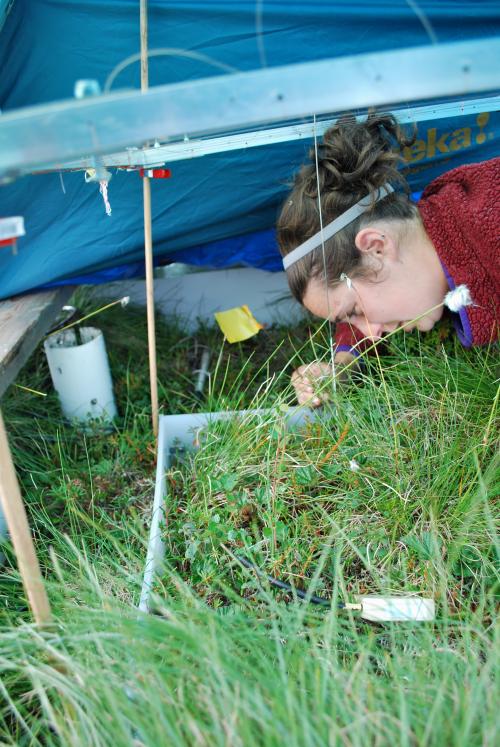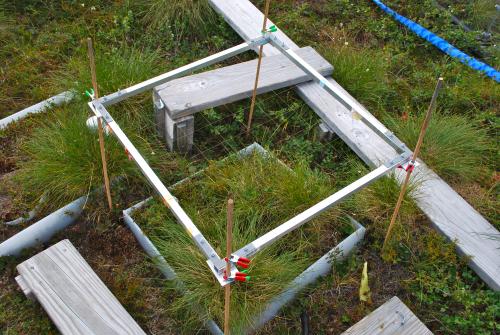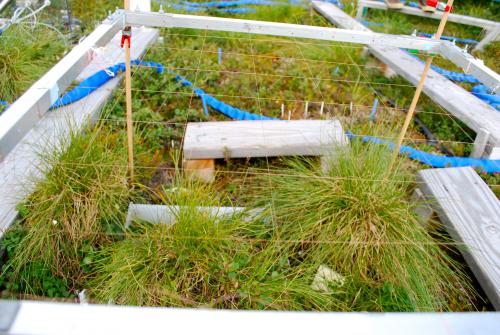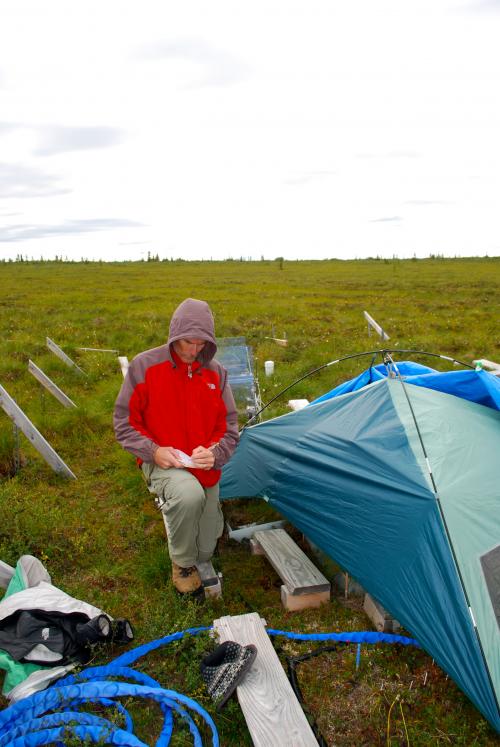The weather has not been cooperating with us this week. It hasn’t been bad under normal conditions but when it comes to point framing, it has been horrible!
Point framing is a procedure used by scientists to determine the biomass, or the amount of living material, that is in one place. From my understanding there are two ways to get the biomass. One way is to dig up all of the plant material in your study site, dry them and weigh all of the material. This gives you a very accurate measurement of the biomass, however it kills all your plants and leaves the study site ruined! The second way to determine the biomass in an area is to use point framing.

To begin with, you must do the digging, drying, and weighing of many areas that are similar to your study area. But just before you dig everything up, you would perform your point framing procedures and estimate the biomass that way. When you have the two measurements, then you can compare them and find out how close the point framing comes to the actual weighing. When you do this enough times you can come up with a relationship or formula that will help you go from one to the other measurement. And the formula still only works for areas that have similar plants and ground cover as the one you are studying. We have a formula that has been calculated over the past several years that relates to tundra areas or our type.


To point frame you need a frame that is the size you need it to be. At our study site the frame is 90 cm square because that is the size of each plot in the experiment. The frame needs to be divided evenly into smaller squares. We string fishing line across in both directions so that we now have a bunch of smaller squares inside of the frame. At this point we place sticks at each corner of our plot and use those to suspend the frame directly over the plot. The frame needs to be higher than the plants you are measuring. Then the person who is performing the point framing uses a long stiff piece of wire that is 1mm in diameter. The wire gets put straight down into the plot at each intersection of wire in the frame. For our frame we have seven wires in each direction, which makes 49 intersections.
Once the wire has been placed in the plot, the person must count how many times a plant touches the wire, and they must identify each plant species for each touch. So a larger plant may give you more touches up and down the wire. It tales about an hour for each plot, and the person doing this must make good observations and know their plants. That person calls out the numbers and the species a second person who is writing this all down in a field notebook.

So you can imagine how hard this process would be if the wind is blowing the plants around and the rain is making everything stick together and to the wire. The counts would be way off and the biomass would come out incorrect. This is how we spent our day today. But because the wind never really went away completely, we set up a tent fly over the plots while we were doing the point framing.


Comments